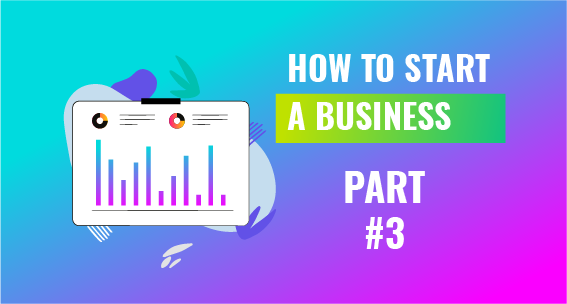Organize your finances
You must estimate your beginning expenses before raising capital for your firm. Make a list of all the physical materials you need, calculate the cost of any professional services you will need, figure out the cost of any operating licenses or permissions, and estimate the cost of office space or another real estate to determine these. Include any appropriate salary and benefit expenses.
Since it might take businesses years to become profitable, it is preferable to overestimate the initial expenses and have too much cash on hand than not enough. Many experts advise spending enough money to pay for six-month operational expenditures.
You must determine the point at which your firm starts to turn a profit before deciding how much money you need to invest. Your break-even point is this sum.
Break-even point = Contribution margin – Fixed cost
Nonetheless, the contribution margin is calculated as total sales revenue minus the cost of production.
For example, consider creating a small company that sells little birdhouses for fairy gardens. You've calculated that the initial expenses will be $500. The piece birdhouse you make has a variable cost of $0.40, and you sell them for $1.50 each.
To make things simpler to understand, let's put them in writing:
1. $500 in fixed fees for the first month.
2. Costs that fluctuate: $0.40 per birdhouse
3. Each birdhouse costs $1.50.
4. The equation is $500/($1.50 - 40 cents), or $500/$1.10, which equals 456 units.
This indicates that you must sell at least 456 units to recoup your expenses. You will make a profit if you can sell more than 456 units in your first month.
Finance Your Business
Internal funding consists of:
1. individual savings
2. Bank cards
funds provided by relatives and friends
Outside financing consists of:
1. Loans to microbusinesses
2. Grants to small businesses
3. Angel backers
4. Venture to fund
5. Crowdfunding
Small enterprises could need to combine many different sources of funding. Take into account how much money is required, how long it will take the business to pay it back, and your level of risk tolerance. Regardless of the source, make a profit-oriented strategy. Six figures are considered preferable to making seven figures and only keeping $80,000.
Ideas for funding include:
You may sell your unpaid bills to a third party at a discount via invoice factoring.
Apply for a company line of credit, which functions similarly to a personal line of credit. Your company's revenue, credit rating, and financial track record will determine the loan limit and interest rate.
Finance for equipment: If you need to buy costly equipment for your company, you may do it with a loan or a lease.
Microloans from the Small Business Administration (SBA) range from $5,000 to $50,000 and may be used for working capital, supplies, inventory, or machinery or equipment.
By taking your required funds, payback terms, and level of risk tolerance into account, you may choose the best funding option for your company.
Submit a Business Insurance Request
Work with a Broker to Obtain Insurance
An insurance professional can assist in choosing the right coverages for your company and locating the insurance plans with the most affordable premiums. An independent insurance agent represents many insurers to compare prices and coverage alternatives.
Basic Business Insurance Coverage Types
Your company is protected by liability insurance against third-party claims of physical harm, property damage, and personal injuries such as defamation or false advertising.
The tangible assets of your company, such as your inventory, equipment, and office space, are covered by property insurance.
Business interruption insurance covers the financial loss when a covered event, such as a natural catastrophe, forces your firm to shut its doors temporarily.
Product liability insurance defends you against allegations that your goods caused property or bodily harm.
Employee complaints of sexual harassment, discrimination, and other forms of wrongful termination are covered by employment practices liability insurance.
Workers' compensation insurance covers employees injured on the job for medical costs and lost wages.




0 Comments